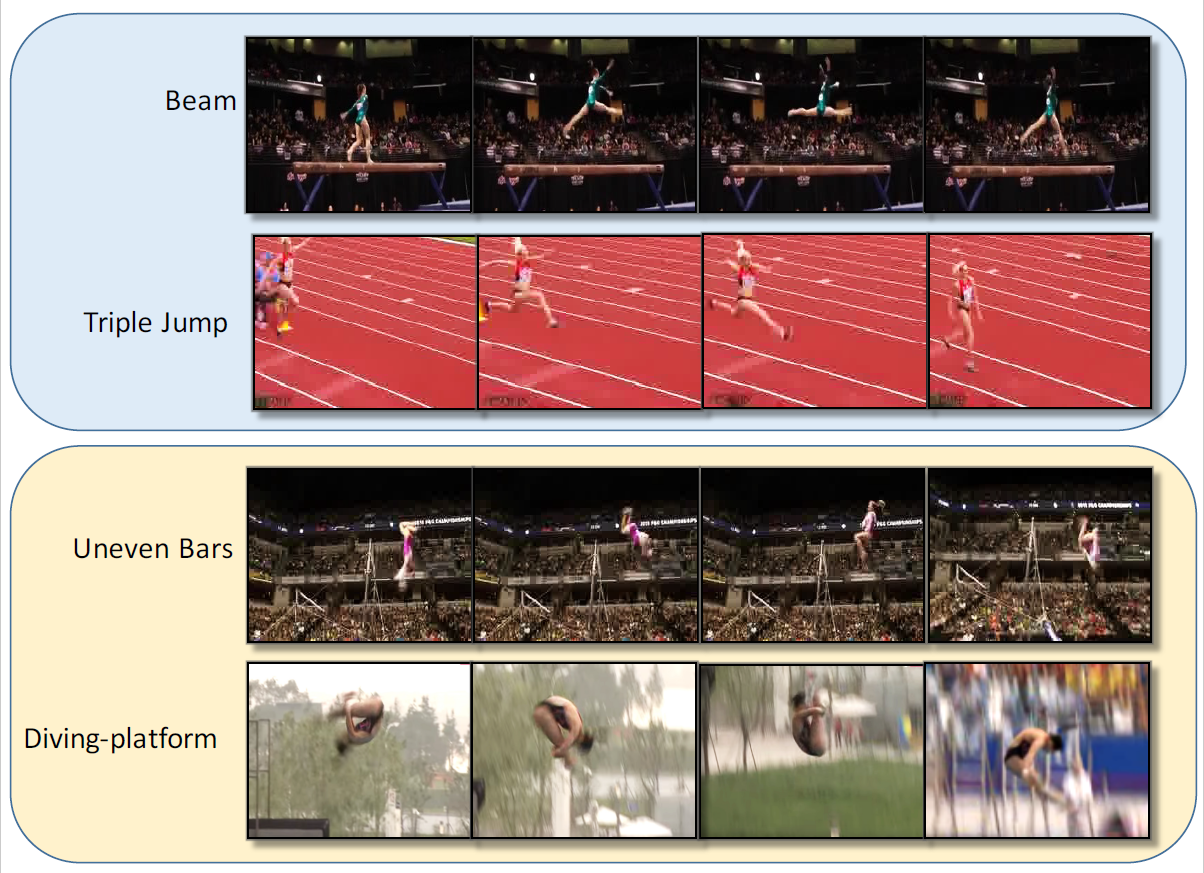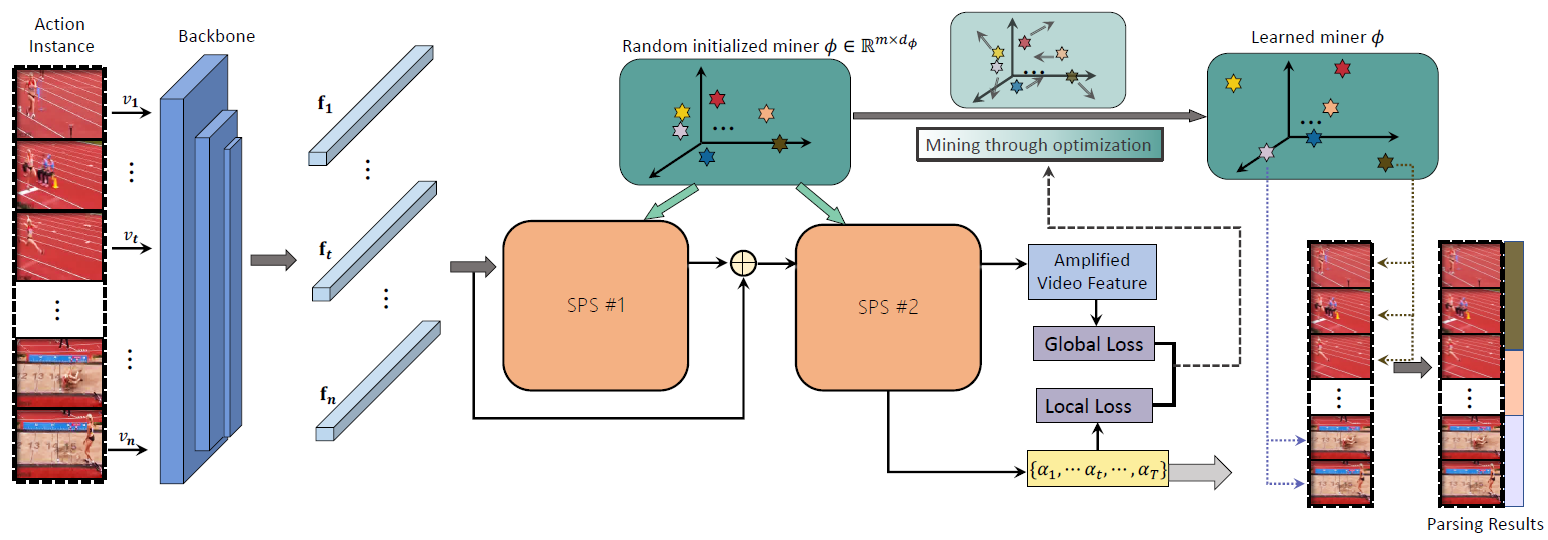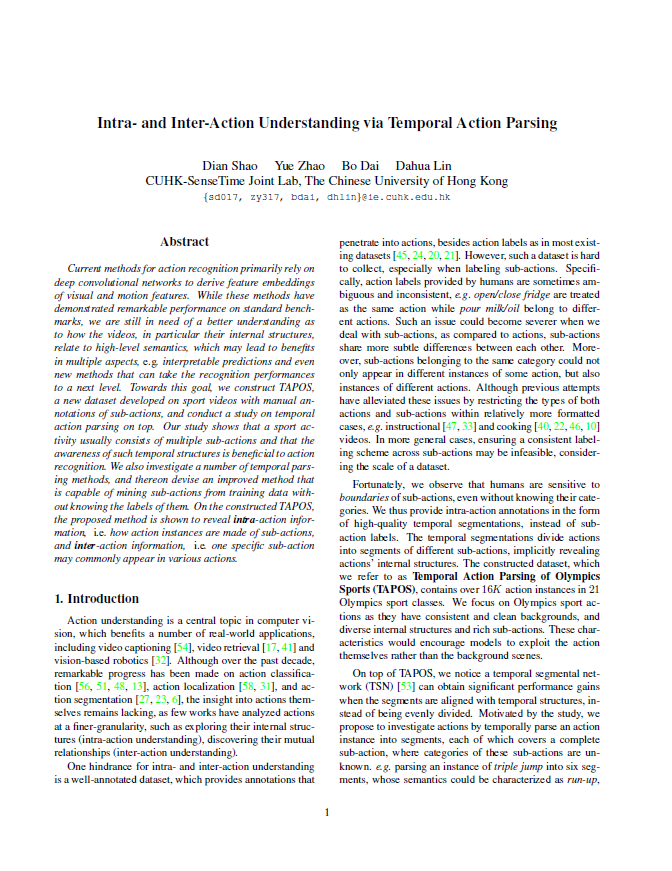How to read the temporal annotation files (JSON)?
Below, we show an example entry from the above JSON annotation file:
{
"yMK2zxDDs2A": { # youtube_id of this video
"s00004_0_100_7_931": { # action_id: this action is in shot4 ranging from 0.1s to 7.931s
"action": 11, # action-level label
"substages": [ # sub-action boundaries
0,
79,
195
],
"total_frames": 195, # total frame of thie action instance
"shot_timestamps": [ # absolute temporal location of shot4 (s00004) within this video
43.36,
53.48
],
"subset": "train" # train or validation
}, .....



